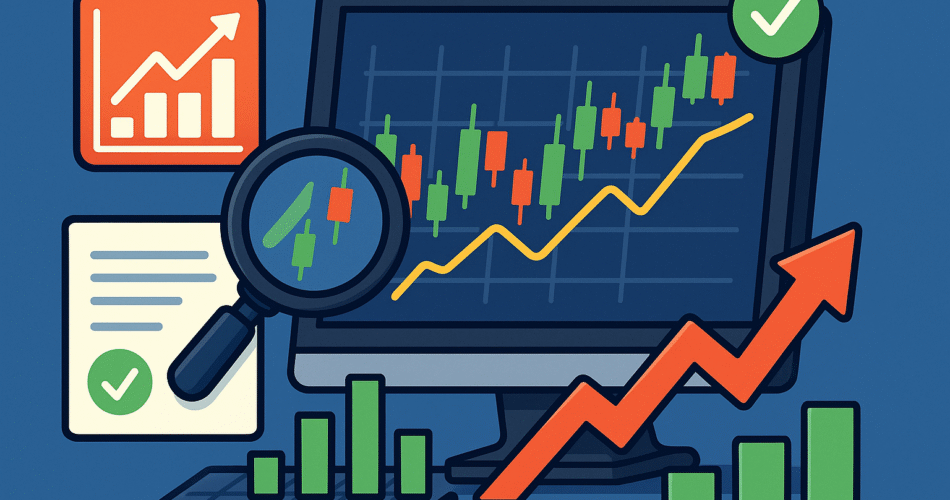Backtesting is the process of evaluating a trading or investment strategy by applying it to historical data. Instead of starting live trading immediately, you simulate how the rules would have performed in the past. This helps uncover potential flaws, understand risk dynamics, and build confidence before committing real capital.
🧭 Why Backtesting Is a Must-Have in Strategy Creation
1. Validates Strategy Robustness
By running a strategy through historical market cycles—including volatile crashes and market rallies—you can evaluate its strengths, weaknesses, and consistency.
2. Enables Parameter Optimization
Backtesting helps fine‑tune entry/exit levels, position sizing rules, stop-loss thresholds, and other parameters. You can adjust them to avoid overfitting yet still find optimal ranges for performance.
3. Measures Risk and Return
It reveals key metrics like:
- Drawdowns – how much capital can be lost in a down cycle
- Sharpe Ratio – risk‑adjusted returns
- Win/Loss Ratio – effectiveness of trades
These statistics offer insight into whether a strategy is both profitable and resilient.
4. Enhances Confidence and Discipline
Knowing how your setup would have behaved historically—especially during crises—builds conviction. This helps prevent emotional or impulsive decisions when you eventually go live.
How To Backtest: A Step-by-Step Guide
- Define Your Rules Clearly
Nail down your entry, exit, sizing rules, and risk limits unambiguously. - Gather & Clean Data
Use reliable sources—like equities across multiple timeframes, considering survivorship bias. - Run Simulations
Use tools like Python, R, Excel, or platforms like Peaks2Tails’s Excel‑Python hybrid setups. - Analyze Results
Look for stable returns, tolerable drawdowns, consistency across market regimes, and compare risk-adjusted metrics. - Stress-Test & Walk-Forward
After tuning, run the strategy on an out-of-sample period and in live “paper” mode before going fully live. - Document & Monitor
Record performance, review deviations, and adjust strategy when necessary—but only when data supports it.
Why Peaks2Tails Emphasizes Backtesting
Peaks2Tails is a comprehensive training ecosystem that integrates theoretical foundations with hands-on backtesting, utilizing both Excel and Python. In their market-risk and credit-risk bootcamps, they teach backtesting as part of both regulatory frameworks and trading strategies—using real-life examples via spreadsheet and code peaks2tails.com.
By practicing backtesting with Peaks2Tails:
- You learn to simulate across real economic cycles
- Gain insight into PnL attribution and risk metrics like VaR/ES
- Understand regulatory demands, including FRTB backtesting rules as taught in their Market & CPD Risk program
Boost Your Strategy Development with Backtesting
| Benefit | What You Gain |
|---|---|
| Confidence | Data-driven analysis before deploying capital |
| Discipline | Rules-based decision making during live trades |
| Optimization | Fine-tune parameters without risking money |
| Compliance Readiness | For those in risk management roles, backtesting builds regulatory compliance muscle |
Final Thoughts: Start Smart, Not Hard
Backtesting is far more than a technical exercise—it’s the backbone of disciplined, analytical, and high-confidence trading or risk strategies. Whether you’re pursuing quantitative finance or risk modeling, mastering backtesting is essential—and that’s where Peaks2Tails excels, bridging the gap between theoretical finance and actionable, data-driven strategy development.
Ready to elevate your strategy development skills? Explore how Peaks2Tails integrates backtesting across their bootcamps—Excel and Python tutorials, real datasets, and regulatory frameworks—all designed to make you a smarter, more confident strategist.

